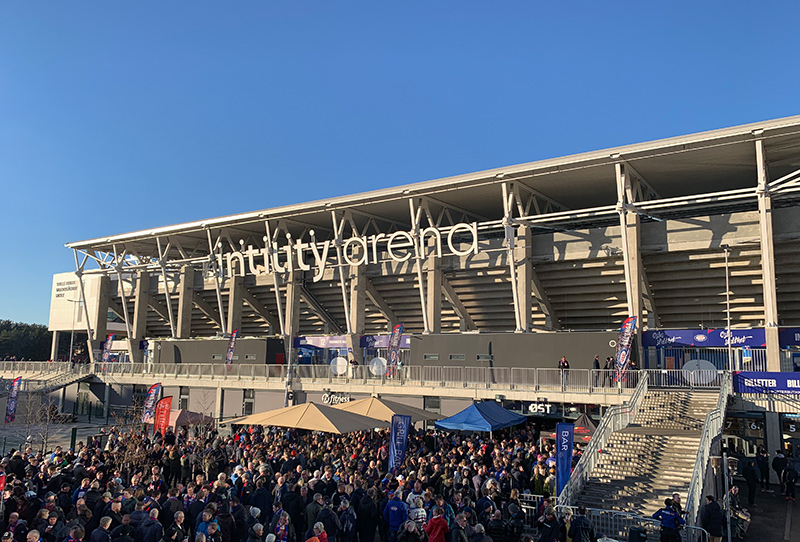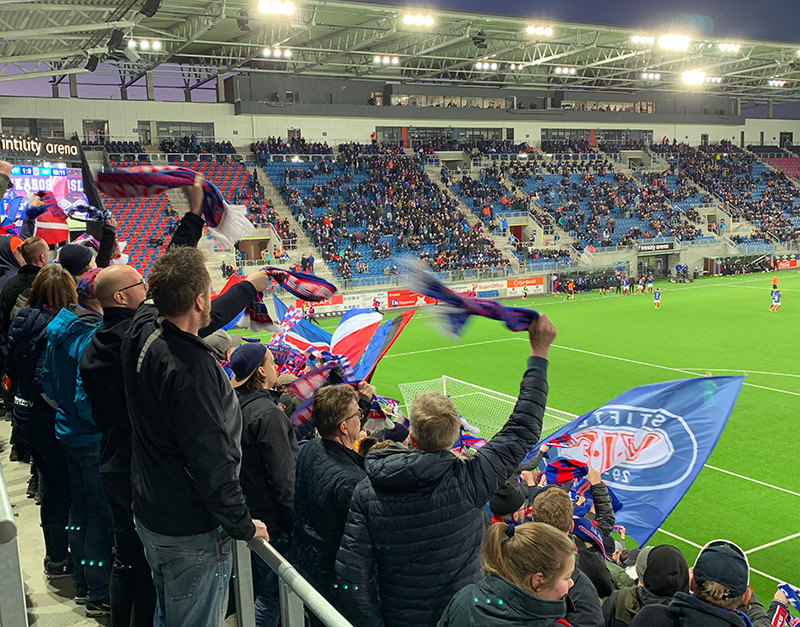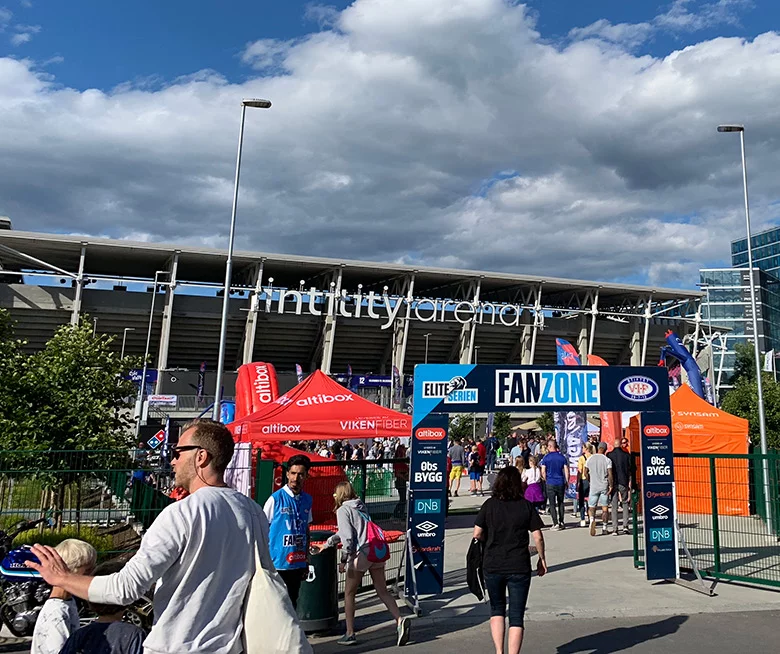Are you a football fan visiting Oslo? Here's everything you need to know about Oslo's Intility Arena.
After decades of playing in other stadiums, Oslo's main football club Vålerenga are back in the east of the city with a home to call their own.

When I arrived in Oslo back in 2011, I was quickly roped in to the Vålerenga family by the friends I was staying with.
But watching the team play in the national stadium always felt odd. No matter how many times I went, it never felt like a home game. Since 2017, Vålerenga has finally had a home to call their own:
Back in the East of Oslo
The talk of a new stadium had existed long before I arrived. Architectural drawings were made for potential locations including Sørenga on the city waterfront, which looked truly awesome. But neither project got off the ground due to high costs and a lack of political support.
In 2008, Oslo city council approved the transfer of land at Valle Hovin for the symbolic sum of one krone. But it took until 2014 for final plans for the new stadium to be approved.
The stadium is located at Valle Hovin, near Helsfyr:
The club took over the stadium on 1 September 2017 and eight days later opened the doors for the first time. Vålerenga's women's team beat Kolbotn 2-0. The next day the men's team were unable to repeat the victory, losing 2-1 to Sarpsborg.
The Stadium
Originally opened as Vålerenga Kultur- og idrettspark (Vålerenga Culture and Sports Park), the stadium's naming rights were soon sold.

It will be known as the Intility Arena until at least 2027. Many fans simply refer to the ground as Vålerenga Stadion or Valle.
The stadium comprises of four stands, even though the early plans were for an entirely enclosed arena with corner seating.
One interesting feature of the ground is the incorporation of ‘safe standing' zones. This is a fan preference and helps to foster atmosphere.
The entire stand you see in the picture above is safe standing, along with a portion of the other end that is used to house fans of the visiting team.
Safe Standing
Traditionally most football stadiums incorporated terracing at both ends of the ground, allowing fans to stand and move freely around during the game. However, after a serious of notable disasters, all-seater stadiums were mandated in most countries.
Safe standing is a mechanism that has seen standing areas reintroduced at many football grounds across Europe.

At Vålerenga matches, ‘rail seating' is used. Seats are locked closed along the rails for most games, allowing everyone to stand and lean on the rail for support, while also spacing fans a safe distance apart.
For some European competitions that still require all-seater stadiums or for other non-football events, the seats can be used.
The capacity of the stadium has confused me a little. The official club website claims the stadium has a capacity of 16,556 when safe standing is used, and 15,395 when it is in an all-seater configuration. Yet the stadium's attendance record set for the first game was 17,011. Curious!
Not Just a Football Stadium
Normally, much of a football stadium is used on just a handful of days each year. In order to prove sustainability and obtain the necessary funding to build the stadium, it was decided to develop school premises within the stadium itself.
There is now a 25-year lease agreement with the City of Oslo, which operates the Valle Hovin videregående skole within the stadium. It's perhaps not surprising to find out the school has a special focus on sports education.
Here's an English language video from FIFA that tells more of the story of Vålerenga coming home.
Fan Zone & Øst Pub
Outside the stadium behind the main ‘home end' is the Øst bar and restaurant, open throughout the week. On match days the area outside the bar transforms into a ‘fan zone' with all kinds of entertainment aimed at both kids and adults.

Øst also run a couple of outdoor serving areas, an essential component given how busy the bar gets on matchdays!
How to Travel to the Intility Arena
If you're planning to visit the stadium for a match, then welcome! The stadium is designed for the crowd to arrive by public transport.
Helsfyr T-Bane station (lines 1-4) is the closest and easiest for most supporters travelling from the city centre. Ensjø and Hasle stations are also within walking distance.
Many buses pass the three stops closest to the stadium, outside Helsfyr station, Grenseveien or Valle Hovin. The airport coach also stops very close by at Teisenkrysset. To find the best option for you, use the journey planner on Ruter.no.
Staying overnight? Because of the good public transport links, any hotel in downtown Oslo is suitable. But if you want to be as close as possible to the stadium, the Scandic Helsfyr is just steps away. You can read a review of the hotel here.
As the biggest club in the Oslo region, the potential supporter base is massive. Now it just needs things to come together on the pitch!
Have you been to Oslo's Intility Arena? Or perhaps you've eaten at ØST. Let us know of your experience in the comments below.


Great article. Regarding the curious fact of the record attendance. For the first game in the new stadium, the capacity of the safe standing zone (home team fans) was overestimated, and the number of tickets on that stand was later reduced by approximately 500. As a result, the attendance record exceeds the maximum allowable limit.